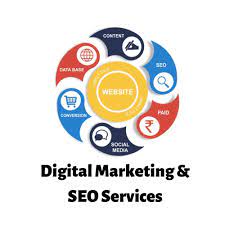Online advertising has become an integral part of the modern business world. With the rise of digital technology, businesses now have access to a wide range of online advertising platforms that allow them to reach their target audience and promote their products or services.
One of the main advantages of online advertising is its ability to target specific demographics. Unlike traditional advertising methods such as print or TV ads, online advertising allows businesses to target their ads to specific groups based on factors such as age, gender, location, and interests. This means that businesses can create highly targeted campaigns that are more likely to resonate with their audience and generate leads and sales.
Another benefit of online advertising is its cost-effectiveness. Compared to traditional advertising methods, online advertising is often much more affordable. Many platforms offer pay-per-click (PPC) pricing models, which means that businesses only pay when someone clicks on their ad. This makes it easier for small businesses with limited budgets to compete with larger companies in the same industry.
Online advertising also offers a high level of flexibility and control. Businesses can easily adjust their campaigns in real-time based on performance data such as click-through rates (CTR) and conversion rates. They can also choose from a variety of ad formats such as banner ads, video ads, social media ads, and more.
However, there are also some challenges associated with online advertising. One of the main issues is ad fraud, which occurs when fraudulent clicks or impressions are generated by bots instead of real users. This can lead to wasted ad spend and lower ROI for businesses.
Another challenge is ad blocking software, which prevents users from seeing certain types of ads. As more people adopt ad blockers, it becomes increasingly difficult for businesses to reach their target audience through traditional display ads.
Despite these challenges, online advertising remains an essential tool for businesses looking to increase brand awareness and drive sales in the digital age. By leveraging the power of targeted campaigns and real-time data analysis, businesses can connect with their audience in meaningful ways and achieve their marketing goals.
5 Effective Tips for Successful Online Advertising
- Utilize social media platforms to target your audience.
- Make sure you have a clear call to action in your ads.
- Segment your audience and tailor your ads accordingly.
- Track and measure the performance of your campaigns regularly.
- Test different ad formats and creative elements to optimize results.
Utilize social media platforms to target your audience.
Social media platforms have become a crucial part of online advertising, offering businesses the opportunity to reach a vast audience and target their ideal customers. By utilizing social media platforms such as Facebook, Twitter, Instagram, and LinkedIn, businesses can create highly targeted campaigns that resonate with their audience and generate leads and sales.
One of the main advantages of social media advertising is its ability to target specific demographics. Social media platforms allow businesses to target ads based on factors such as age, gender, location, interests, and behaviors. This means that businesses can create highly targeted campaigns that are more likely to resonate with their audience and generate leads and sales.
Another benefit of social media advertising is its cost-effectiveness. Compared to traditional advertising methods, social media advertising is often much more affordable. Many platforms offer pay-per-click (PPC) pricing models, which means that businesses only pay when someone clicks on their ad. This makes it easier for small businesses with limited budgets to compete with larger companies in the same industry.
Social media advertising also offers a high level of flexibility and control. Businesses can easily adjust their campaigns in real-time based on performance data such as click-through rates (CTR) and conversion rates. They can also choose from a variety of ad formats such as image ads, video ads, carousel ads, and more.
In conclusion, utilizing social media platforms for online advertising is an effective way for businesses to reach their target audience in a cost-effective manner. By leveraging the power of targeted campaigns and real-time data analysis offered by social media platforms, businesses can connect with their audience in meaningful ways and achieve their marketing goals.
Make sure you have a clear call to action in your ads.
When it comes to online advertising, having a clear call to action (CTA) is essential. A CTA is a statement that tells the viewer what they should do next after seeing your ad. It can be as simple as “click here to learn more” or “sign up now for a free trial.”
Without a clear CTA, viewers may not know what action to take and may simply move on without engaging with your ad. This can result in wasted ad spend and lower conversion rates.
To create an effective CTA, it’s important to be clear and concise. Use action-oriented language that encourages the viewer to take immediate action. Make sure the CTA stands out visually by using contrasting colors or bold text.
It’s also important to consider the context of your ad when crafting your CTA. For example, if you’re running a Facebook ad promoting a new product, your CTA might be “Shop Now” or “Buy Today.” If you’re running a Google search ad for a service-based business, your CTA might be “Book Now” or “Schedule Your Appointment.”
Ultimately, having a clear call to action in your ads can make all the difference in driving conversions and achieving your marketing goals. By guiding viewers towards taking specific actions, you can increase engagement and drive more sales for your business.
Segment your audience and tailor your ads accordingly.
When it comes to online advertising, one of the most important tips is to segment your audience and tailor your ads accordingly. This means identifying different groups within your target audience and creating specific ads that speak to their unique needs and interests.
Segmentation allows you to create highly targeted campaigns that are more likely to resonate with your audience and generate leads and sales. For example, if you’re selling a product that appeals to both men and women, you might create separate campaigns for each group with different ad copy, images, and calls-to-action.
To segment your audience effectively, start by gathering data on their demographics, interests, behaviors, and preferences. You can use tools such as Google Analytics or Facebook Insights to gain insights into your audience’s characteristics and behavior patterns.
Once you have this information, you can create targeted ads that speak directly to each segment of your audience. For example, if you’re targeting young adults who are interested in fitness, you might create an ad featuring a fit model using your product at the gym.
Tailoring your ads in this way can help improve engagement rates and increase conversions. By speaking directly to the needs and interests of each segment of your audience, you can build stronger relationships with them over time.
In conclusion, segmenting your audience is an essential strategy for successful online advertising. By taking the time to understand your audience’s unique characteristics and tailoring your ads accordingly, you can create highly targeted campaigns that drive results for your business.
Track and measure the performance of your campaigns regularly.
When it comes to online advertising, tracking and measuring the performance of your campaigns is essential. Without this data, it’s impossible to know whether your ads are effective or not. Fortunately, there are many tools available that can help you track and measure your campaigns in real-time.
One of the main benefits of tracking and measuring your campaigns is that it allows you to identify areas for improvement. For example, if you notice that your click-through rate (CTR) is low, you may need to adjust your ad copy or targeting to better resonate with your audience. Similarly, if you’re not seeing a good return on investment (ROI), you may need to adjust your bidding strategy or shift your focus to a different platform.
Regularly tracking and measuring the performance of your campaigns also allows you to optimize them for maximum effectiveness. By analyzing data such as CTRs, conversion rates, and cost-per-click (CPC), you can make informed decisions about where to allocate your budget and which ads to prioritize.
Another benefit of tracking and measuring your campaigns is that it helps you stay competitive in a constantly evolving digital landscape. By keeping a close eye on industry trends and best practices, you can stay ahead of the curve and ensure that your campaigns are always up-to-date.
In conclusion, tracking and measuring the performance of your online advertising campaigns is crucial for success in today’s digital age. By using tools such as Google Analytics or Facebook Ads Manager, businesses can gain valuable insights into their audience’s behavior and optimize their campaigns accordingly. So if you’re not already regularly tracking and measuring the performance of your campaigns, now is the time to start!
Test different ad formats and creative elements to optimize results.
When it comes to online advertising, there is no one-size-fits-all approach. What works for one business may not work for another. That’s why it’s important to test different ad formats and creative elements to optimize your results.
Ad formats refer to the different types of ads available, such as banner ads, social media ads, video ads, and more. Each format has its own strengths and weaknesses, so it’s important to experiment with different formats to see which ones resonate best with your target audience.
Creative elements refer to the visual and textual components of an ad. This includes the headline, body copy, images or videos used, and the call-to-action (CTA). By testing different creative elements, you can determine which combinations are most effective at capturing your audience’s attention and driving conversions.
To optimize your results through testing, start by creating multiple variations of your ad using different formats and creative elements. Then run these variations simultaneously and track their performance using metrics such as click-through rates (CTR), conversion rates, and cost per acquisition (CPA).
Based on the results of your tests, you can make informed decisions about which ad formats and creative elements are most effective for your business. This will help you maximize your advertising budget by focusing on what works best for your audience.
In conclusion, testing different ad formats and creative elements is a crucial step in optimizing your online advertising campaigns. By experimenting with different approaches and analyzing the results, you can refine your strategy over time to achieve better results and drive more conversions for your business.



